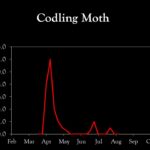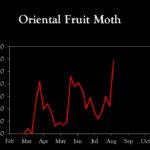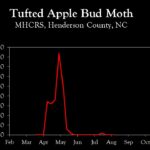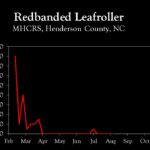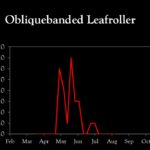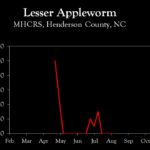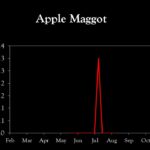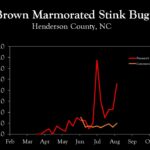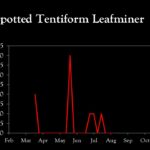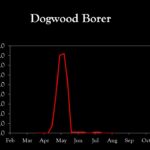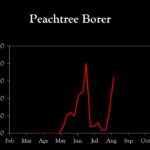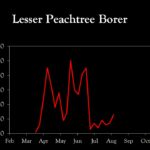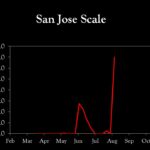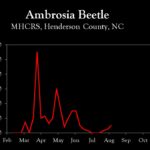WNC Orchard Insect Pest Populations – August 30, 2022
go.ncsu.edu/readext?883100
en Español / em Português
El inglés es el idioma de control de esta página. En la medida en que haya algún conflicto entre la traducción al inglés y la traducción, el inglés prevalece.
Al hacer clic en el enlace de traducción se activa un servicio de traducción gratuito para convertir la página al español. Al igual que con cualquier traducción por Internet, la conversión no es sensible al contexto y puede que no traduzca el texto en su significado original. NC State Extension no garantiza la exactitud del texto traducido. Por favor, tenga en cuenta que algunas aplicaciones y/o servicios pueden no funcionar como se espera cuando se traducen.
Português
Inglês é o idioma de controle desta página. Na medida que haja algum conflito entre o texto original em Inglês e a tradução, o Inglês prevalece.
Ao clicar no link de tradução, um serviço gratuito de tradução será ativado para converter a página para o Português. Como em qualquer tradução pela internet, a conversão não é sensivel ao contexto e pode não ocorrer a tradução para o significado orginal. O serviço de Extensão da Carolina do Norte (NC State Extension) não garante a exatidão do texto traduzido. Por favor, observe que algumas funções ou serviços podem não funcionar como esperado após a tradução.
English
English is the controlling language of this page. To the extent there is any conflict between the English text and the translation, English controls.
Clicking on the translation link activates a free translation service to convert the page to Spanish. As with any Internet translation, the conversion is not context-sensitive and may not translate the text to its original meaning. NC State Extension does not guarantee the accuracy of the translated text. Please note that some applications and/or services may not function as expected when translated.
Collapse ▲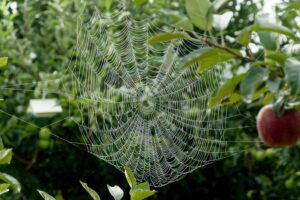 Not much has changed since last week in terms of the key insect pests of concern at this time. First generation brown marmorated stink bug adults continue to emerge, but numbers remain low compared to populations at similar times in past years. Also, apple maggot fly captures have been low in Henderson County, but as mentioned last week this can vary among orchards, particularly in areas where there may be sources of flies near managed orchards or at higher elevations. Although oriental fruit moth pheromone trap captures have increased in the past week at the research station, these are in orchards that are minimally sprayed.
Not much has changed since last week in terms of the key insect pests of concern at this time. First generation brown marmorated stink bug adults continue to emerge, but numbers remain low compared to populations at similar times in past years. Also, apple maggot fly captures have been low in Henderson County, but as mentioned last week this can vary among orchards, particularly in areas where there may be sources of flies near managed orchards or at higher elevations. Although oriental fruit moth pheromone trap captures have increased in the past week at the research station, these are in orchards that are minimally sprayed.
Finally, there have been some reports of late-season European red mite populations showing up in some orchards. Population increases after July are not common, and this probably a response to recent pyrethroid applications made for stink bugs. Trees can generally tolerate higher numbers of mites later in the season, in the range of 10-15 mites per leaf.
Learn more about southeastern apple insect pests at the Apple Insect Management page.
2022 Average Weekly Trap Captures
| HENDERSON COUNTY | |||
| Insects per trap | |||
| Aug 15 | Aug 22 | Aug 29 | |
| Codling moth | 1.0 | 0.0 | 0.0 |
| Oriental fruit moth | 15.0 | 11.0 | 29.5 |
| Tufted apple bud moth | 0.0 | 0.0 | 0.0 |
| Redbanded leafroller | 0.0 | 0.0 | 0.0 |
| Obliquebanded leafroller | 0.0 | 0.0 | 0.0 |
| Lesser appleworm | 0.0 | 0.0 | 0.0 |
| Apple maggot (abandoned and research orchards) | 0.0 | 0.0 | 0.0 |
| Brown marmorated stink bug (commercial) | 1.9 | 1.3 | 2.0 |
| Brown marmorated stink bug (unsprayed) | 4.5 | 4.5 | 9.5 |
| Spotted tentiform leafminer | 0.0 | 0.0 | 0.0 |
| Dogwood borer | 0.0 | 0.0 | 0.0 |
| Peachtree borer | 1.0 | 7.0 | 16.0 |
| Lesser peachtree borer | 9.0 | 7.0 | 13.0 |
| San Jose scale | 0.0 | 0.0 | 70.0 |
| Ambrosia beetle (all species) | 0.0 | 0.0 | 1.0 |
*Note that these averages illustrate only the timing of insect emergence and fluctuations in populations, and are not representative of population levels in any given orchard. The only way to have an accurate assessment of an individual orchard’s populations is to set up traps in that orchard.
2022 Accumulated Degree Days
| HENDERSON COUNTY | ||||
| Aug 15 | Aug 22 | Aug 29 | ||
| Codling moth (Biofix: April 22) | 2358 | 2506 | 2668 | |
| Oriental fruit moth (Biofix: April 12) | 3005 | 3189 | 3385 | |
| Tufted apple bud moth (Biofix: April 27) | 2828 | 2991 | 3188 | |



